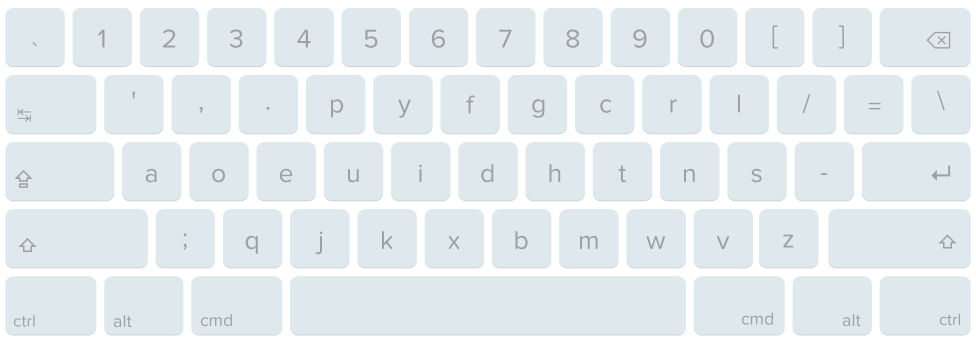
From the Typewriter to the Modern Keyboard
The traditional layouts for computer keyboards were invented to overcome the technical problems of the first typewriters. Frequently used keys would jam if they were placed too close to each other. As a result, the QWERTY and AZERTY keyboards were invented at the end of the 19th century.
Ergonomics: The Basis of the Dvorak Keyboard
At the beginning of the 1930s, American researchers August Dvorak and William Dealey decided to create a more ergonomic alternative to the QWERTY keyboard. They place the comfort of the user at the centre of their work. The Dvorak layout (Dvorak Simplified Keyboard or DSK) was born and was then adapted for languages other than English.
Dvorak layout
The Principles of the Dvorak Keyboard
The Dvorak layout aims to reduce finger and hand motion in order to increase the user’s typing speed and to reduce the risk of repetitive strain injuries. The layout is based on several principles:
• Equal distribution of the keys between the areas covered by the two hands
• Alternating the typing load between the two hands
• Greater use of the home rowWhy Did the Dvorak Keyboard Not Replace the QWERTY Keyboard?
While the Dvorak layout seems to have many advantages, it never succeeded in displacing the QWERTY keyboard. Studies have shown only a slight increase in the typing speed of users who switch from QWERTY to Dvorak. This negligible increase might partly explain the lack of interest in the keyboard layout.
Also, acquiring a new typing method can take weeks, even months, which puts off many potential users. Also, most available typing programs are based on the QWERTY, QWERTZ and AZERTY keyboards.



